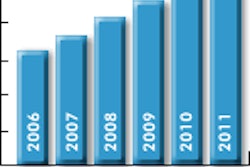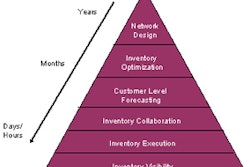San Francisco — February 14, 2007 — Many manufacturers believe that it is important to measure the speed at which products are made, but very few have systems in place to do so, according to the results of a new survey conducted by Maxager Technology.
Maxager, which provides enterprise profit optimization and profitability analysis solutions, conducted the survey in the fourth quarter of last year among executives and managers at chemicals, metals, electronics and other complex manufacturers.
The survey results showed that although respondents overwhelmingly (92 percent) believe that analyzing the speed with which they produced profitable products was important, 71 percent don't have software or systems in place to do so. The result is that very few manufacturers (5.7 percent) have the ability to use a metric that is aligned with return on assets (ROA).
According to Michael Rothschild, founder and CEO of Maxager: "The findings don't surprise me. Many of our customers realize the importance of incorporating the speed at which products are made along with margin in order to evaluate profitability. But they just haven't had the ability to be able to do this."
The survey also showed:
"The unavailability of a time-based operational metric that takes production run times into account has forced companies to use different metrics in each department, none of which are directly linked to return on assets, the profitability metric of most importance to shareholders," said Rothschild. "In our experience, this results in lost profits worth 3-5 percent of revenue, not to mention numerous heated debates that result from the lack of a common metric."
Combining production velocity with margin produces a profit-per-minute metric. Being time-based, this metric is directly linked to ROA. It can be used at an operational level to measure the profitability of individual products, customers, deals, markets, sales regions, salespeople and production facilities. Then, everyday decisions about which products to make, who to sell them to and where to make them can be made collaboratively to maximize annual corporate profits and ROA.
Maxager, which provides enterprise profit optimization and profitability analysis solutions, conducted the survey in the fourth quarter of last year among executives and managers at chemicals, metals, electronics and other complex manufacturers.
The survey results showed that although respondents overwhelmingly (92 percent) believe that analyzing the speed with which they produced profitable products was important, 71 percent don't have software or systems in place to do so. The result is that very few manufacturers (5.7 percent) have the ability to use a metric that is aligned with return on assets (ROA).
According to Michael Rothschild, founder and CEO of Maxager: "The findings don't surprise me. Many of our customers realize the importance of incorporating the speed at which products are made along with margin in order to evaluate profitability. But they just haven't had the ability to be able to do this."
The survey also showed:
- Sales and marketing groups use revenues and sales as their primary metric (81 percent had it as their first choice).
- Production teams most often focus on costs (78 percent), with production speed (67 percent) second.
- Finance departments use both costs (86 percent) and margin-based profits (86 percent) as their primary metrics.
"The unavailability of a time-based operational metric that takes production run times into account has forced companies to use different metrics in each department, none of which are directly linked to return on assets, the profitability metric of most importance to shareholders," said Rothschild. "In our experience, this results in lost profits worth 3-5 percent of revenue, not to mention numerous heated debates that result from the lack of a common metric."
Combining production velocity with margin produces a profit-per-minute metric. Being time-based, this metric is directly linked to ROA. It can be used at an operational level to measure the profitability of individual products, customers, deals, markets, sales regions, salespeople and production facilities. Then, everyday decisions about which products to make, who to sell them to and where to make them can be made collaboratively to maximize annual corporate profits and ROA.



















